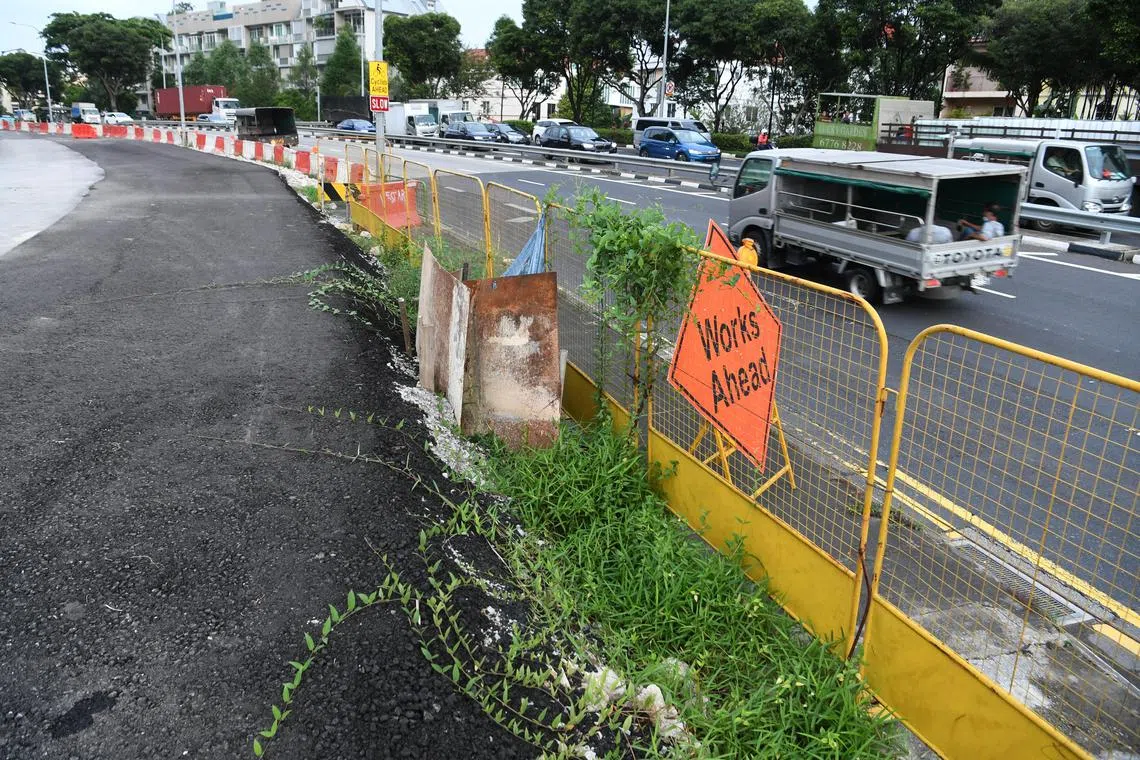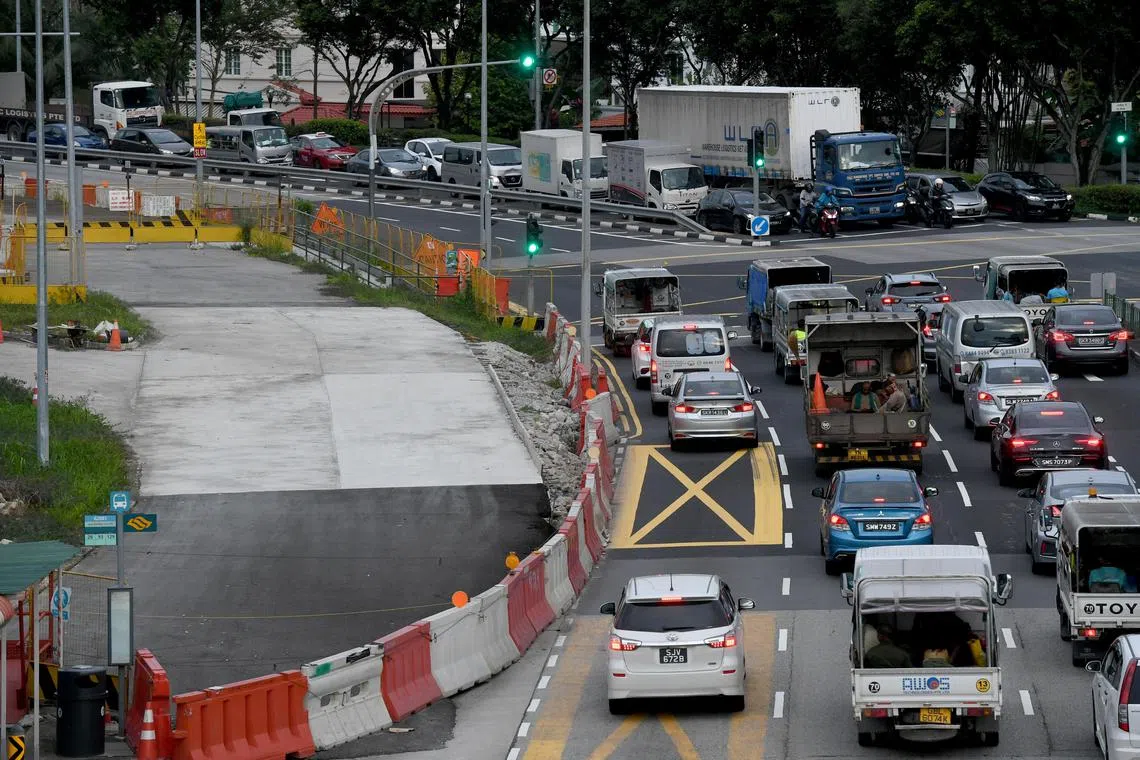Bartley Road to be raised gradually to meet new Bidadari road
Sign up now: Get ST's newsletters delivered to your inbox

The new Bidadari Park Drive (left) is more than one metre higher than Bartley Road which it is joining.
ST PHOTO: DESMOND FOO
Follow topic:
SINGAPORE - Residents in Bidadari – a 10,000-unit Housing Board estate near Toa Payoh and Potong Pasir – will have to wait longer for a more direct route to Bartley Road and Serangoon Avenue 1.
Bidadari Park Drive, a 1.6km two-lane dual carriageway described by the HDB as the estate’s “main transportation spine”, was slated to connect to the two existing roads by the first half of 2023
But the opening is now further delayed owing to a significant elevation difference between Bidadari Park Drive and Bartley Road.
Responding to The Straits Times’ request for an update, the HDB said Bartley Road has to be raised in stages because Bidadari Park Drive is more than 1m higher.
“The works were originally estimated to be completed in the first half of this year. However, given the technical complexities of the site, more time may be needed for the construction,” said an HDB spokesman, adding that the board could not say when the project would be finished.
“HDB is reviewing the completion timeline.”
Raising Bartley Road involves topping it up with layer after layer of road construction material such as bitumen, and compacting each layer until the road reaches the desired elevation.
An on-site check by ST on Friday found that at its highest point, Bidadari Park Drive is about 1.2m higher than Bartley Road.
Asked why it did not design the new road to be of the same elevation as an existing busy thoroughfare – to minimise disruption to traffic – HDB said one reason was that Bidadari Park Drive also connects to Bartley Walk, a small road fronting Maris Stella High School, which is located on high ground and “cannot be lowered”.
“Lowering Bidadari Park Drive to match Bartley Road will thus result in a very steep gradient along Bartley Walk,” the spokesman explained.
Engineers said it was uncommon for an existing road’s elevation to be altered to match that of a new road. Usually, it is the other way around.
“Generally, we try not to touch an existing road,” a veteran engineer said. “Not just because it can be disruptive to traffic, but also because an existing road has its own design elements to take into account factors like drainage, kerbs and other street infrastructure.
“So, it is not as simple as layering the tarmac to raise its elevation.”
But he acknowledged that there might be special reasons why a new road cannot be of a certain elevation.
“It might be because of flood mitigation, for instance,” said the engineer, who asked not to be named.

An elevated view of the busy junction, which also connect to Serangoon Ave 1.
ST PHOTO: DESMOND FOO
Retired transport engineer Gopinath Menon said lowering the elevation of the new road might mean the flats next to it would become higher, creating slopes that “could be a waste of space”.
HDB said the development of Bidadari estate has been planned to capitalise on its naturally hilly terrain, such that developments are integrated into the natural landscape.
“The proposed raising of the road profile at the junction of Bartley Road is based on technical assessments, taking into consideration the overall road network design in Bidadari estate,” it added.
Bidadari Park Drive also connects the 57ha estate to two other arterial roads: Upper Aljunied Road and Upper Serangoon Road.


